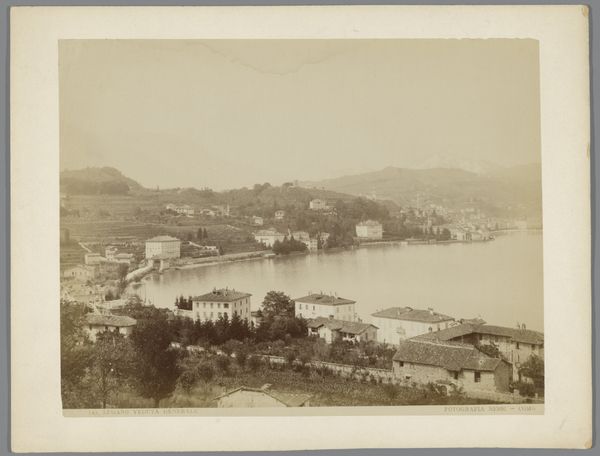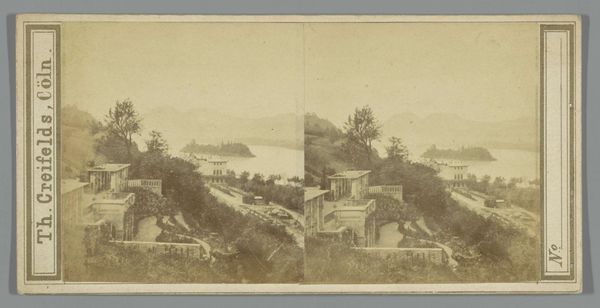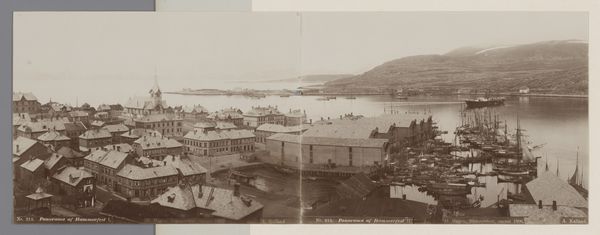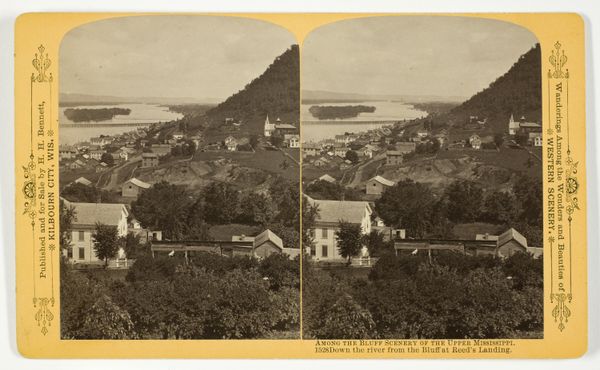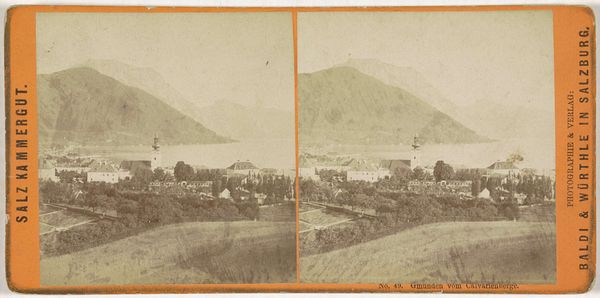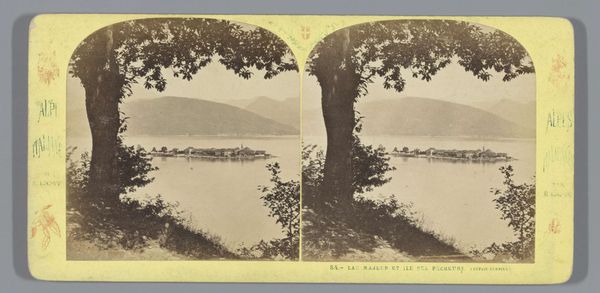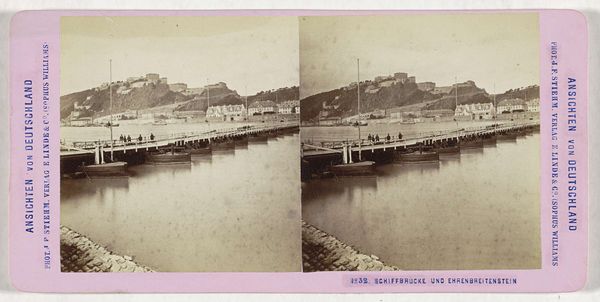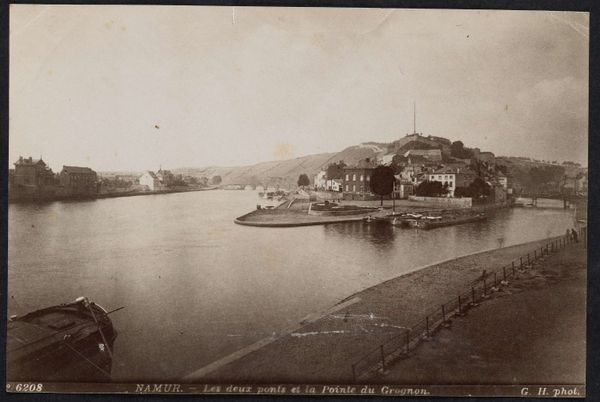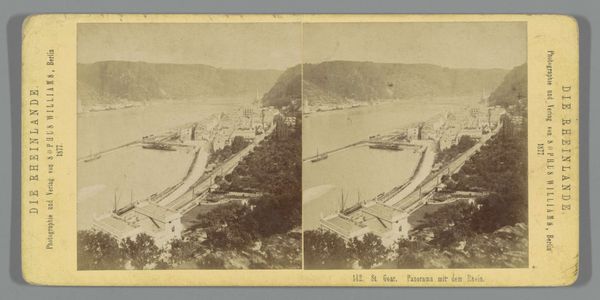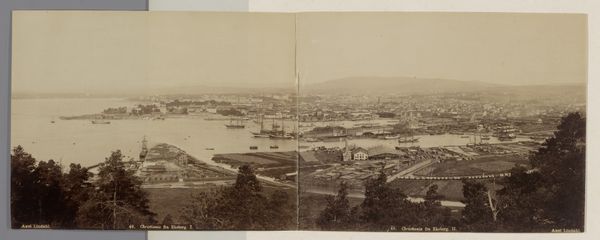
Gezicht op eiland Nonnenwerth in de Rijn, met het Zevengebergte op de achtergrond 1867 - 1872
0:00
0:00
Dimensions: height 86 mm, width 177 mm
Copyright: Rijks Museum: Open Domain
Editor: This is "Gezicht op eiland Nonnenwerth in de Rijn, met het Zevengebergte op de achtergrond," taken by Johann Friedrich Stiehm sometime between 1867 and 1872, an albumen print photograph. It feels so calm and orderly. What do you see in this piece, looking at it through the lens of history? Curator: Calm, yes, but that tranquility is carefully constructed. Consider the historical context. This image was produced during a period of great social and political upheaval in Germany. Photography was booming, used to present a specific narrative of German identity, one often romanticized and idealized. Note how the composition carefully frames the island, presenting it as a symbol of idyllic life. Editor: So, it's not necessarily an accurate reflection of reality? Curator: Precisely. The framing is doing a lot of work here. Who is this idyll for, we must ask? Look at the choice of a classic landscape view, typical of pictorialism. This stylistic choice echoes paintings, thus legitimizing photography as high art and solidifying a very specific visual language that spoke of progress and stability in turbulent times, and possibly also catered to tourists. What do you notice about the shadows? Editor: They’re soft…almost like they are veiling something. Curator: Exactly. Think about what’s *not* being shown. Where are the workers? Where is the evidence of industrialization rapidly changing the landscape? These visual choices are all deliberate, contributing to a narrative of seamless progress and obscuring any underlying social tensions. The photograph functions as a tool to construct a particular national image. Editor: I never thought about it that way. It’s almost like the photo is selling a dream. I definitely see more now of its potential as propaganda. Curator: Indeed. Understanding these images necessitates an intersectional approach, situating them within broader sociopolitical forces to really unlock their complex stories.
Comments
No comments
Be the first to comment and join the conversation on the ultimate creative platform.


